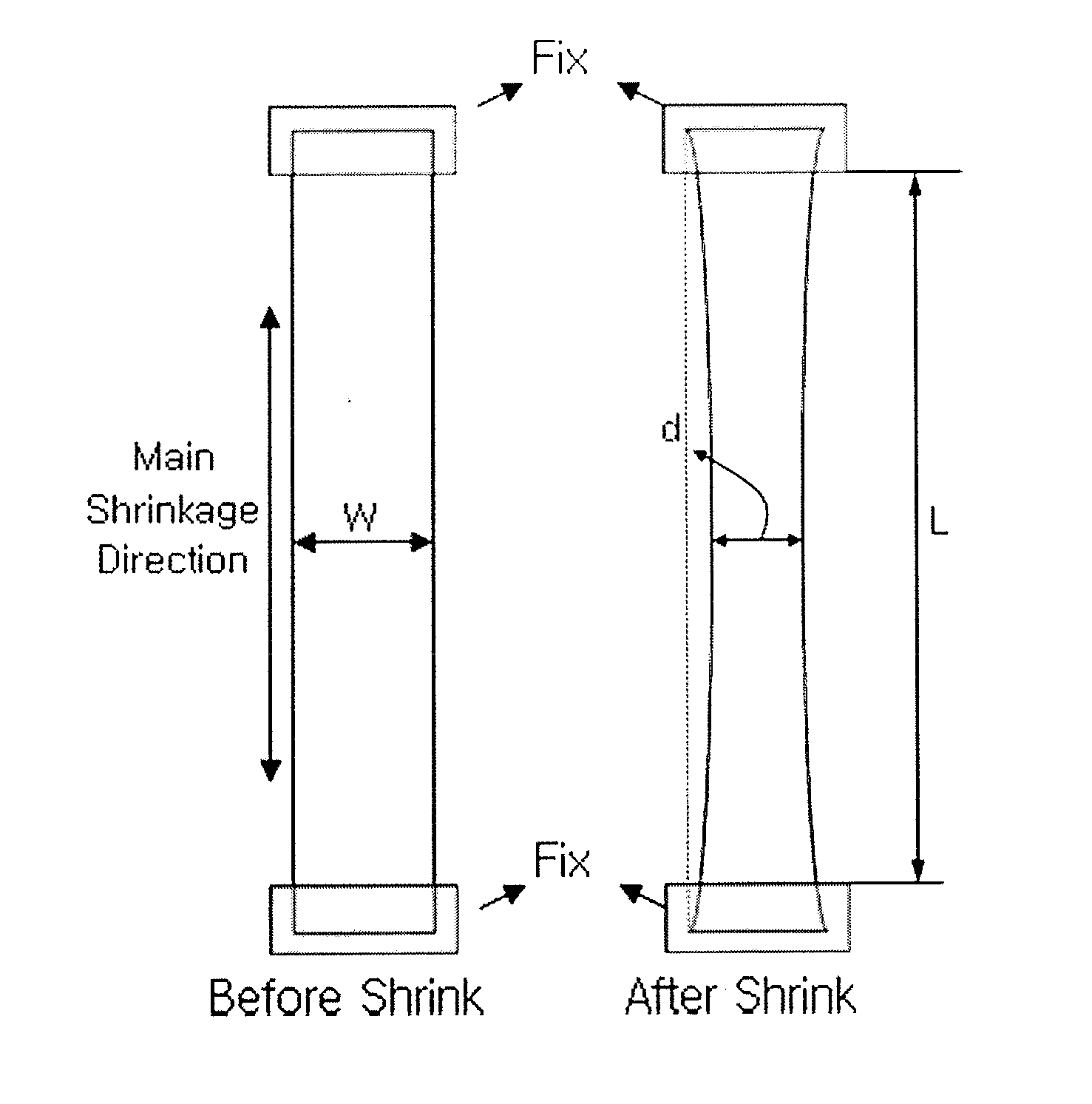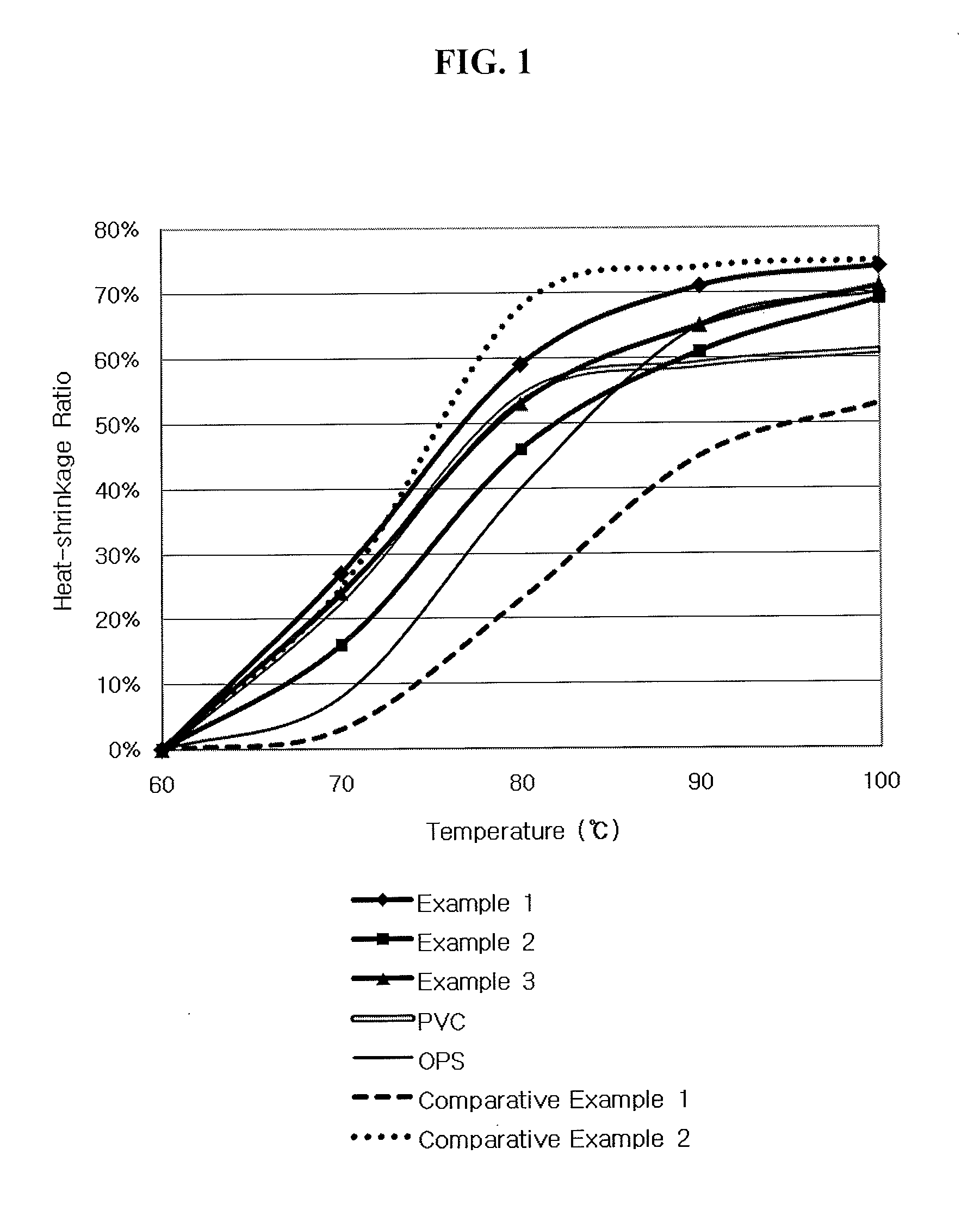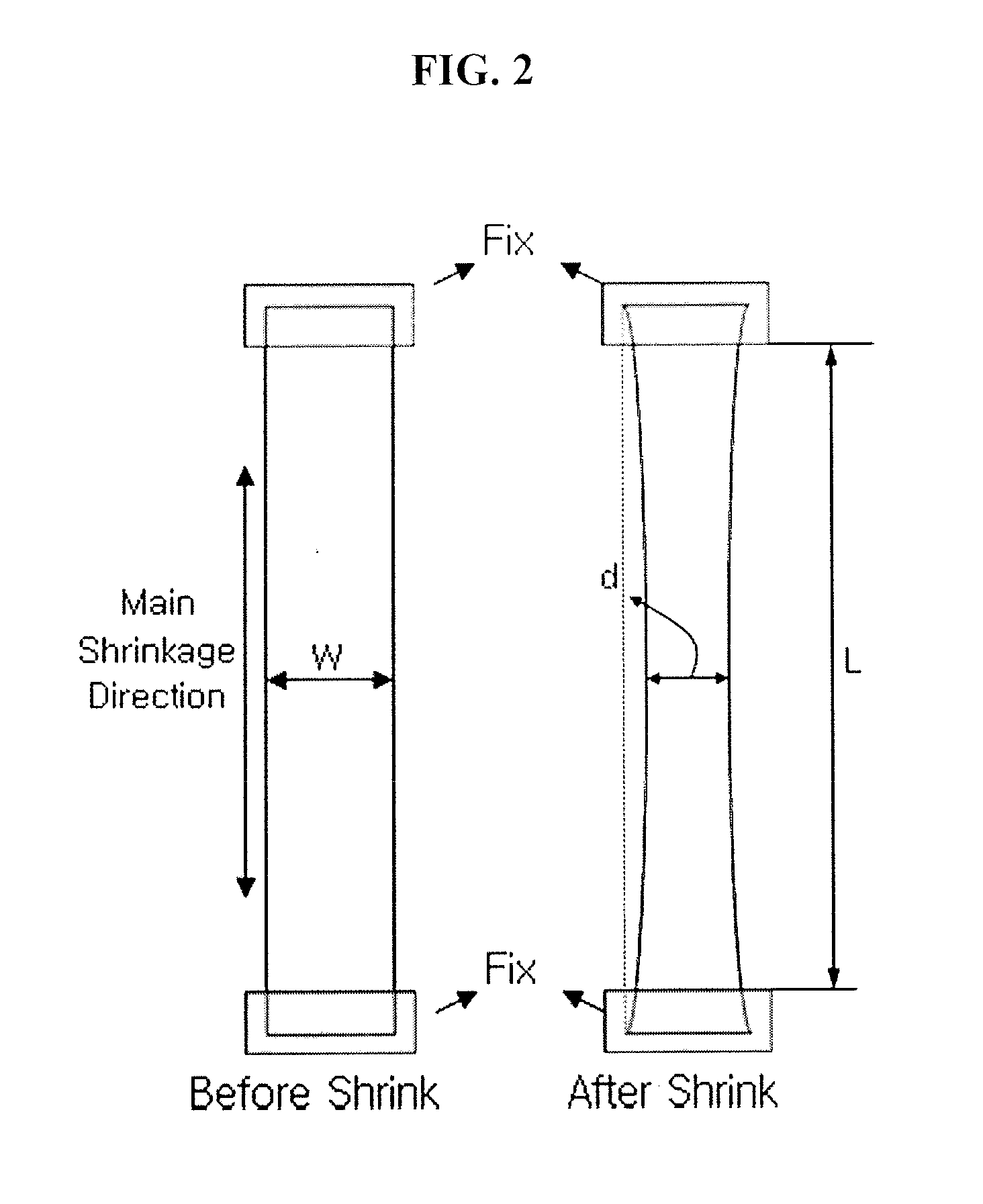Heat-shrinkable polyester film
a polyester film and shrinkage technology, applied in the field of shrinkable polyester film, can solve the problems of poor heat resistance, oriented polystyrene films are unsuitable for high-temperature filling process, and soft polyvinyl chloride (pvc) has recently become disfavored, etc., to achieve good appearance quality, improve heat-shrinkability, mechanical strength, shrinkability and shrinkability. the effect of sufficien
- Summary
- Abstract
- Description
- Claims
- Application Information
AI Technical Summary
Benefits of technology
Problems solved by technology
Method used
Image
Examples
Embodiment Construction
[0016]The heat-shrinkable polyester film of the present invention has a heat-shrinkage change per degree Celsius (% / ° C.) along the main shrinkage direction being 1.5 to 3.0 in the range of 60° C. to 70° C., 2.5 to 3.5 in the range of 70° C. to 80° C., 1.0 to 2.0 in the range of 80° C. to 90° C., and 0.1 to 1.0 in the range of 90° C. to 100° C. For example, heat-shrinkage change over temperature along the main shrinkage direction, means a gradient of curve at each temperature region shown in FIG. 1.
[0017]As shown in FIG. 1, the heat-shrinkable polyester film of the present invention has a relatively constant change rate (i.e., gradient), and thus, the heat-shrinkage ratio does not change drastically in the entire temperature range, which is unlike conventional films. In particular, it is found from FIG. 1 that the inventive film shows substantially constant change rate, i.e., a straight line-like curve, at a temperature ranging from 60 to 80° C., which is similar to the heat-shrinka...
PUM
| Property | Measurement | Unit |
|---|---|---|
| mol % | aaaaa | aaaaa |
| mol % | aaaaa | aaaaa |
| mol % | aaaaa | aaaaa |
Abstract
Description
Claims
Application Information
 Login to View More
Login to View More - R&D
- Intellectual Property
- Life Sciences
- Materials
- Tech Scout
- Unparalleled Data Quality
- Higher Quality Content
- 60% Fewer Hallucinations
Browse by: Latest US Patents, China's latest patents, Technical Efficacy Thesaurus, Application Domain, Technology Topic, Popular Technical Reports.
© 2025 PatSnap. All rights reserved.Legal|Privacy policy|Modern Slavery Act Transparency Statement|Sitemap|About US| Contact US: help@patsnap.com



